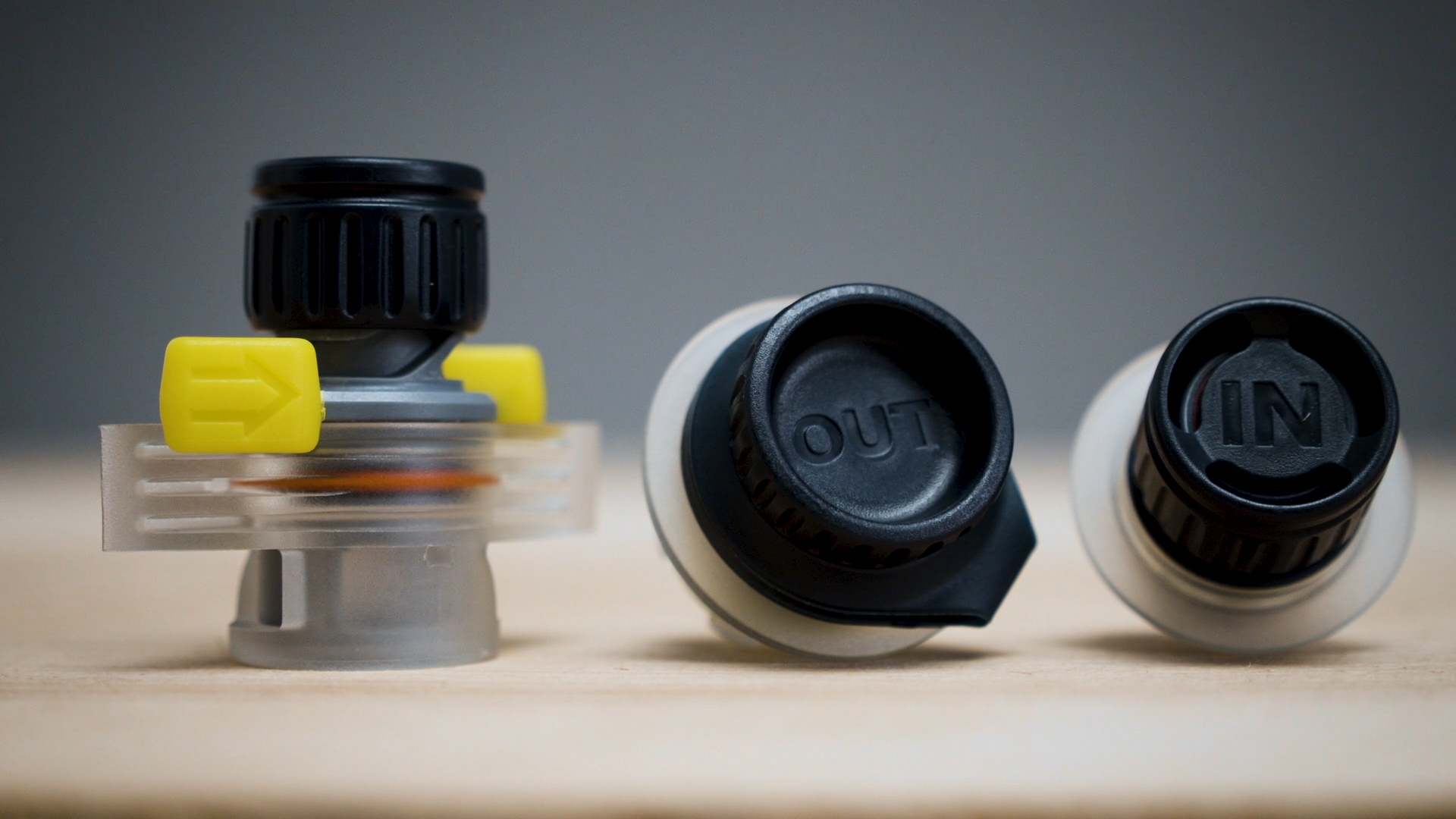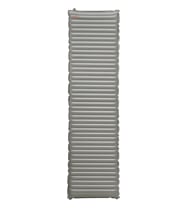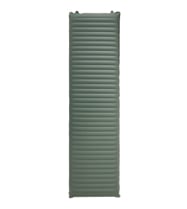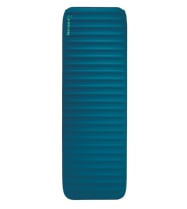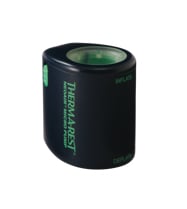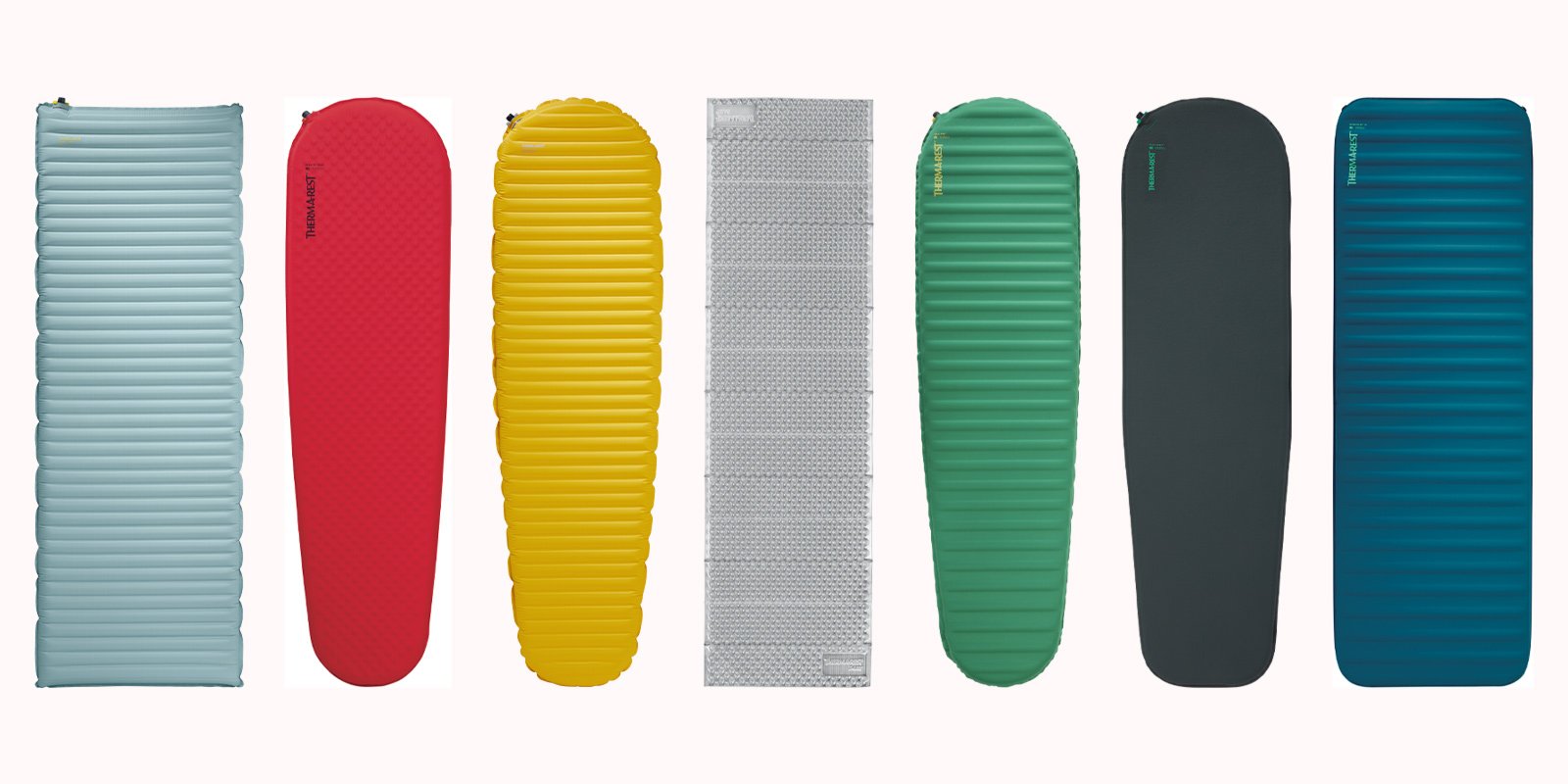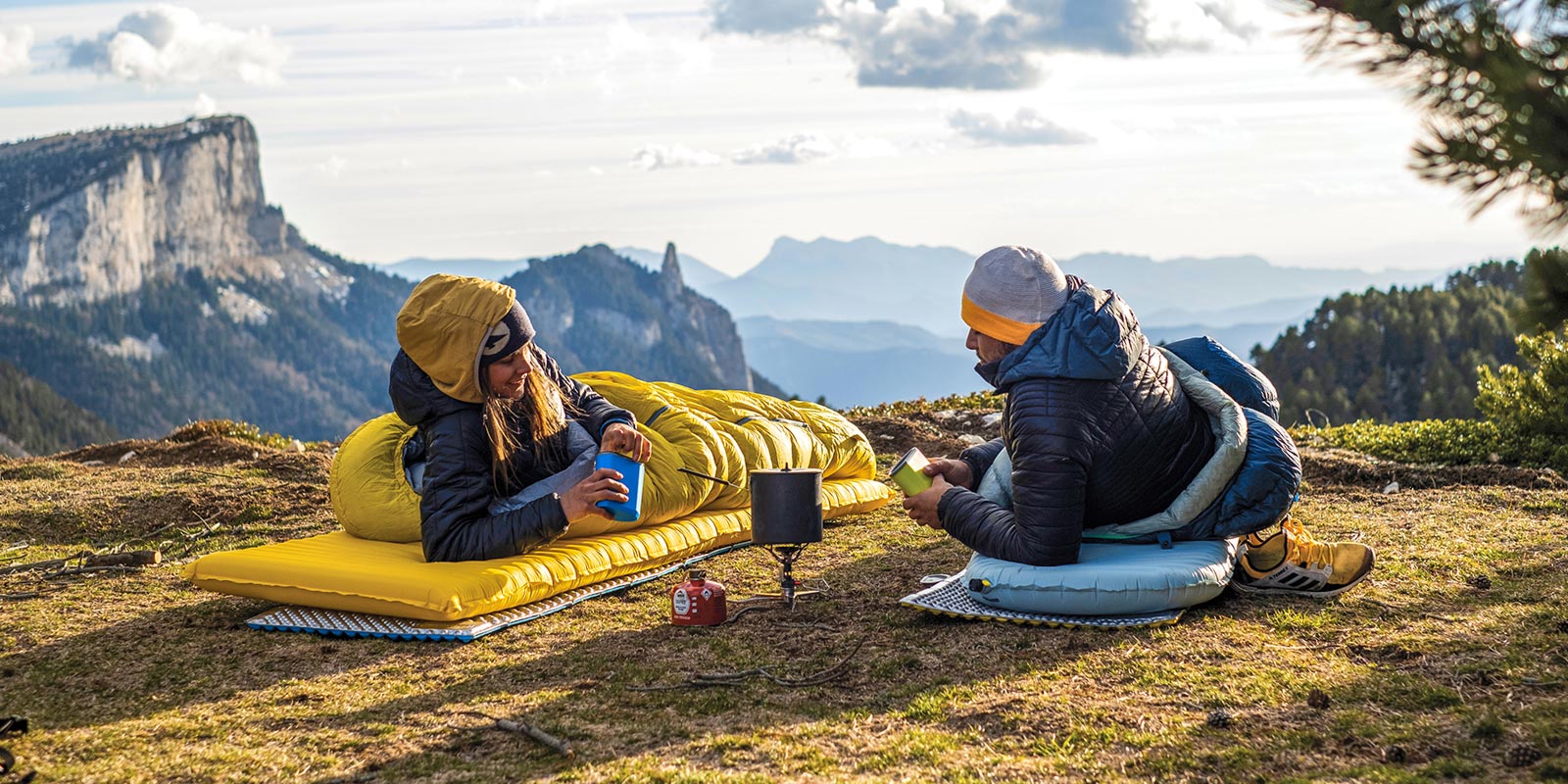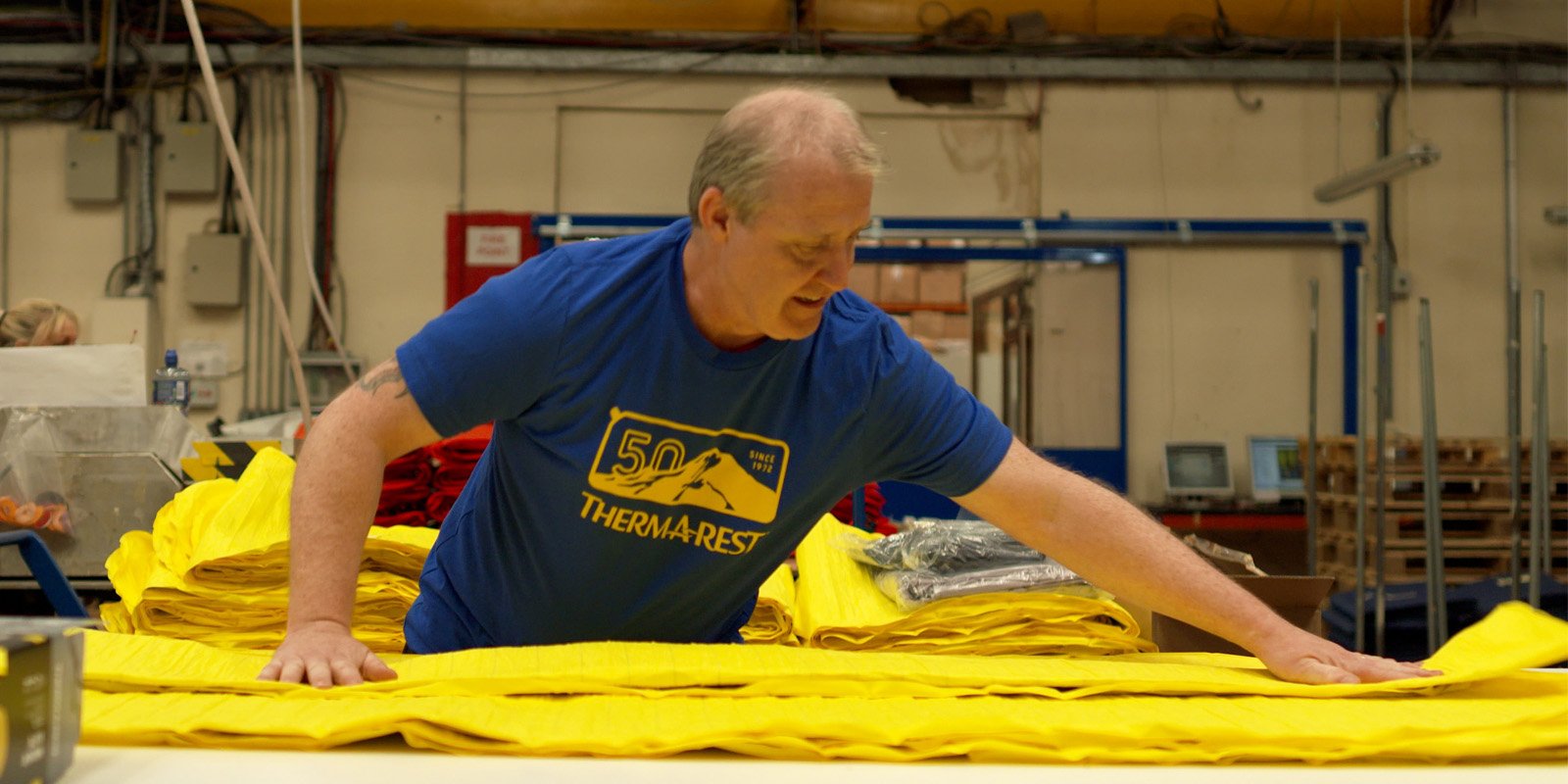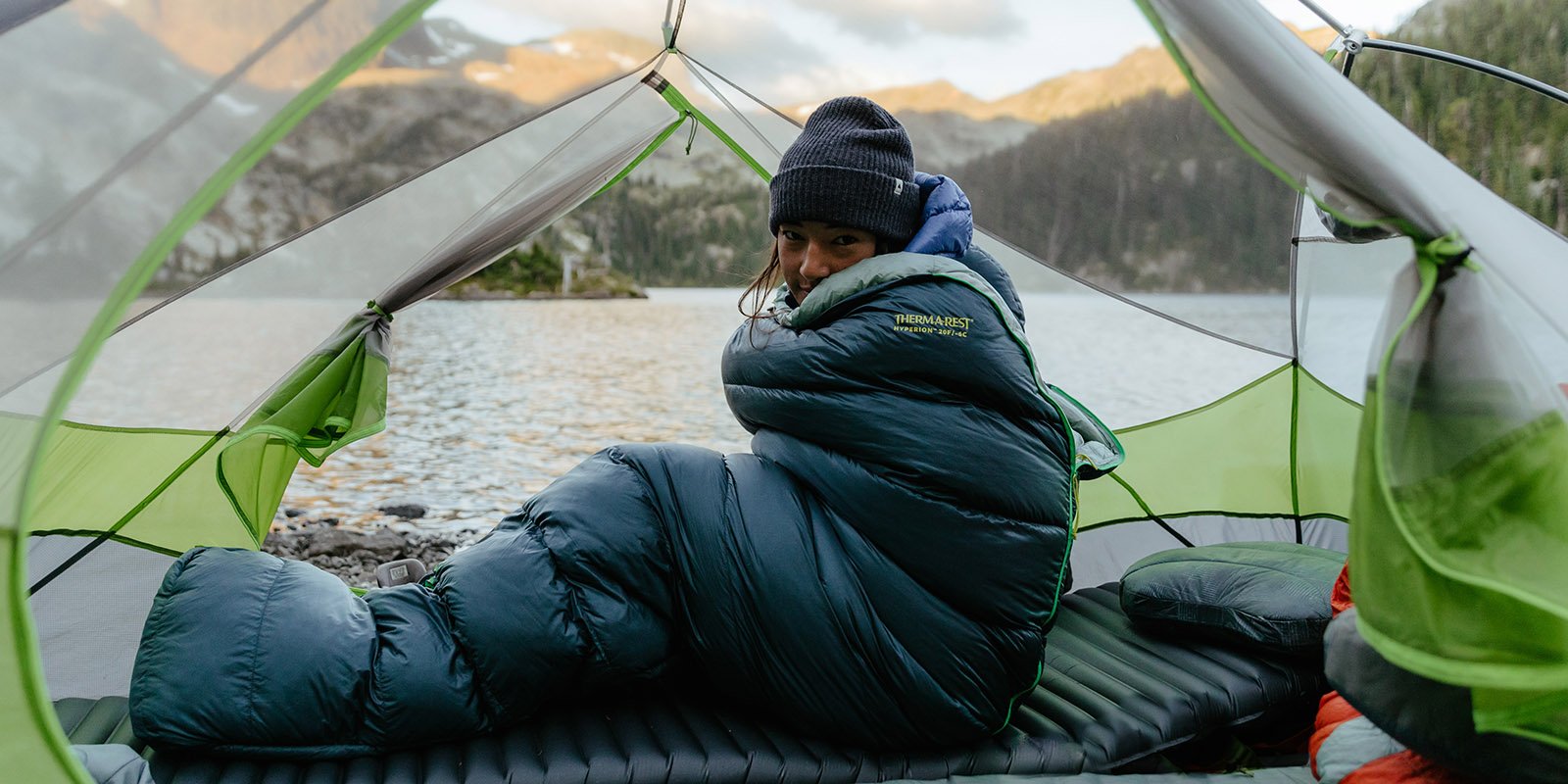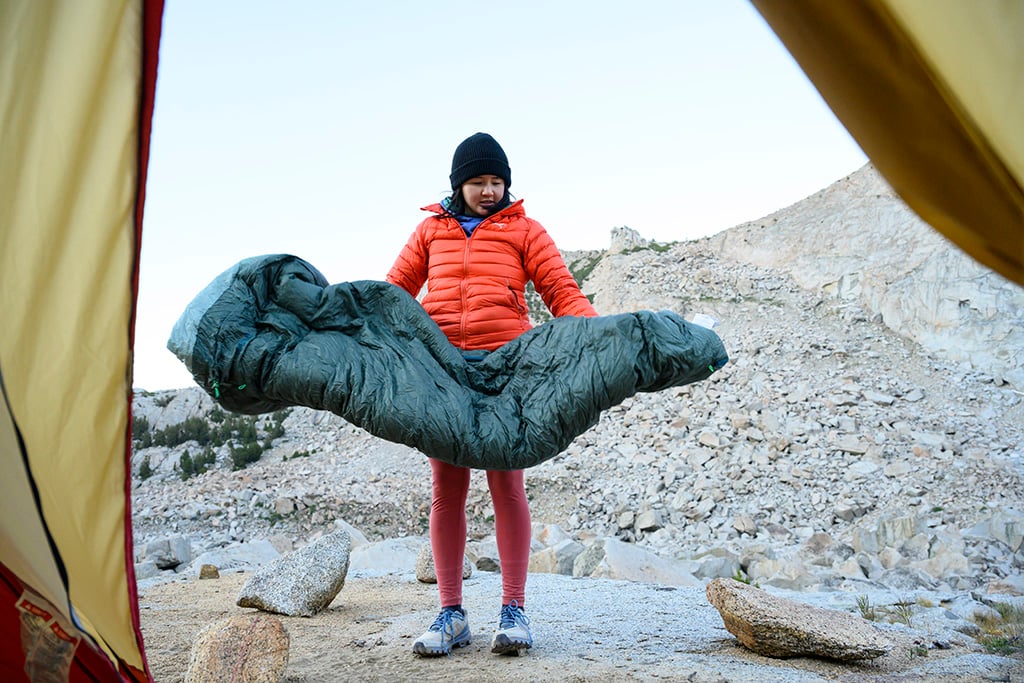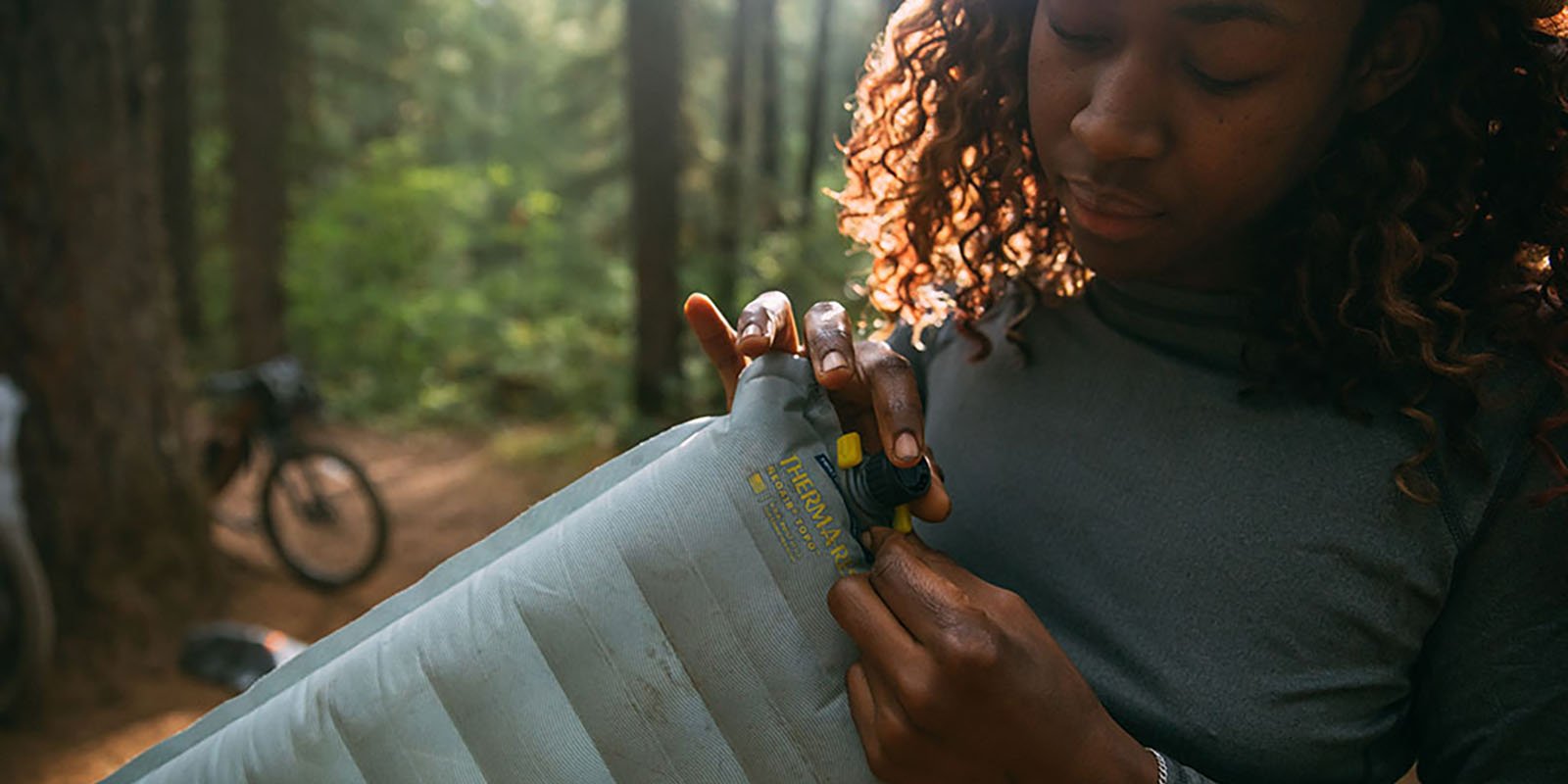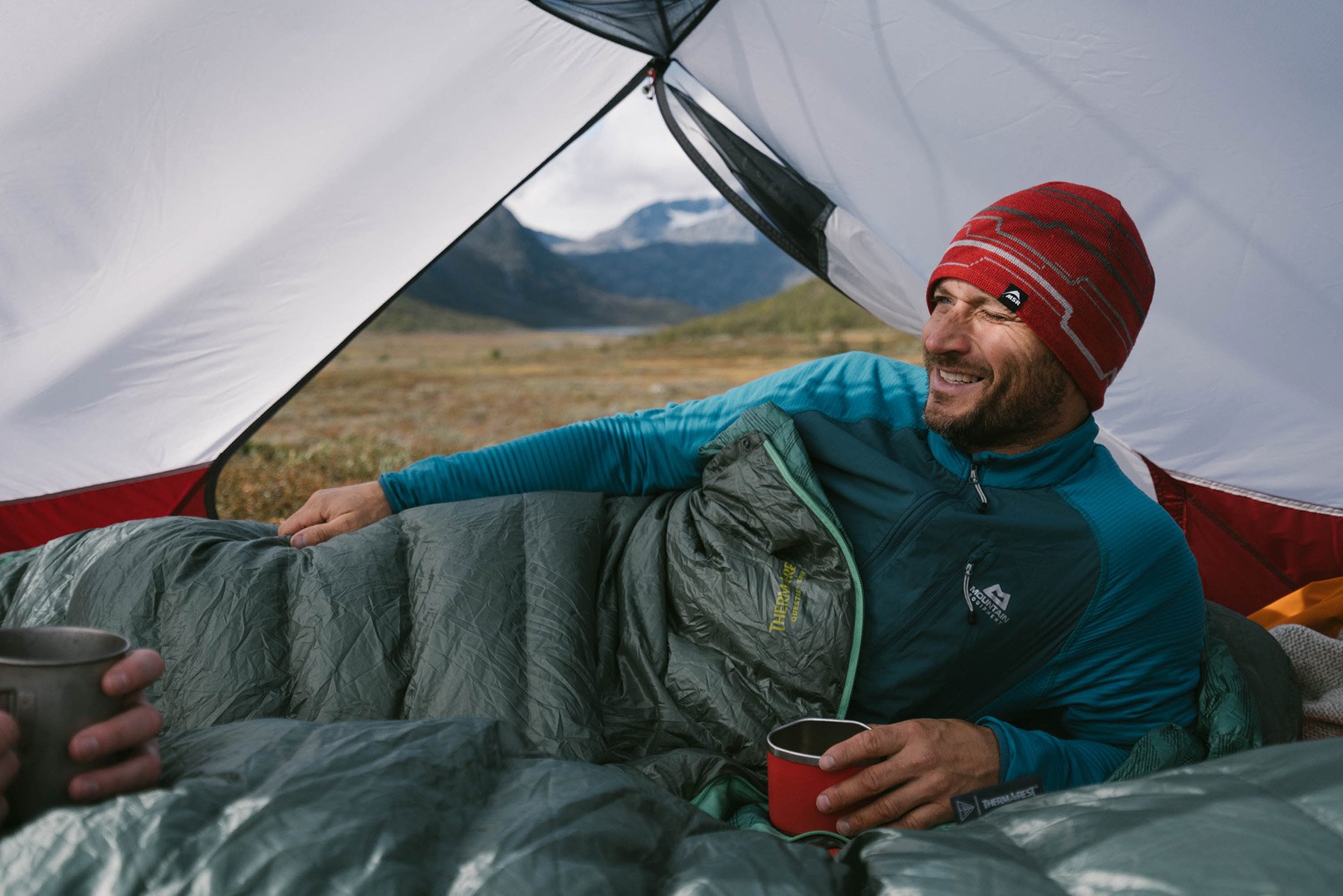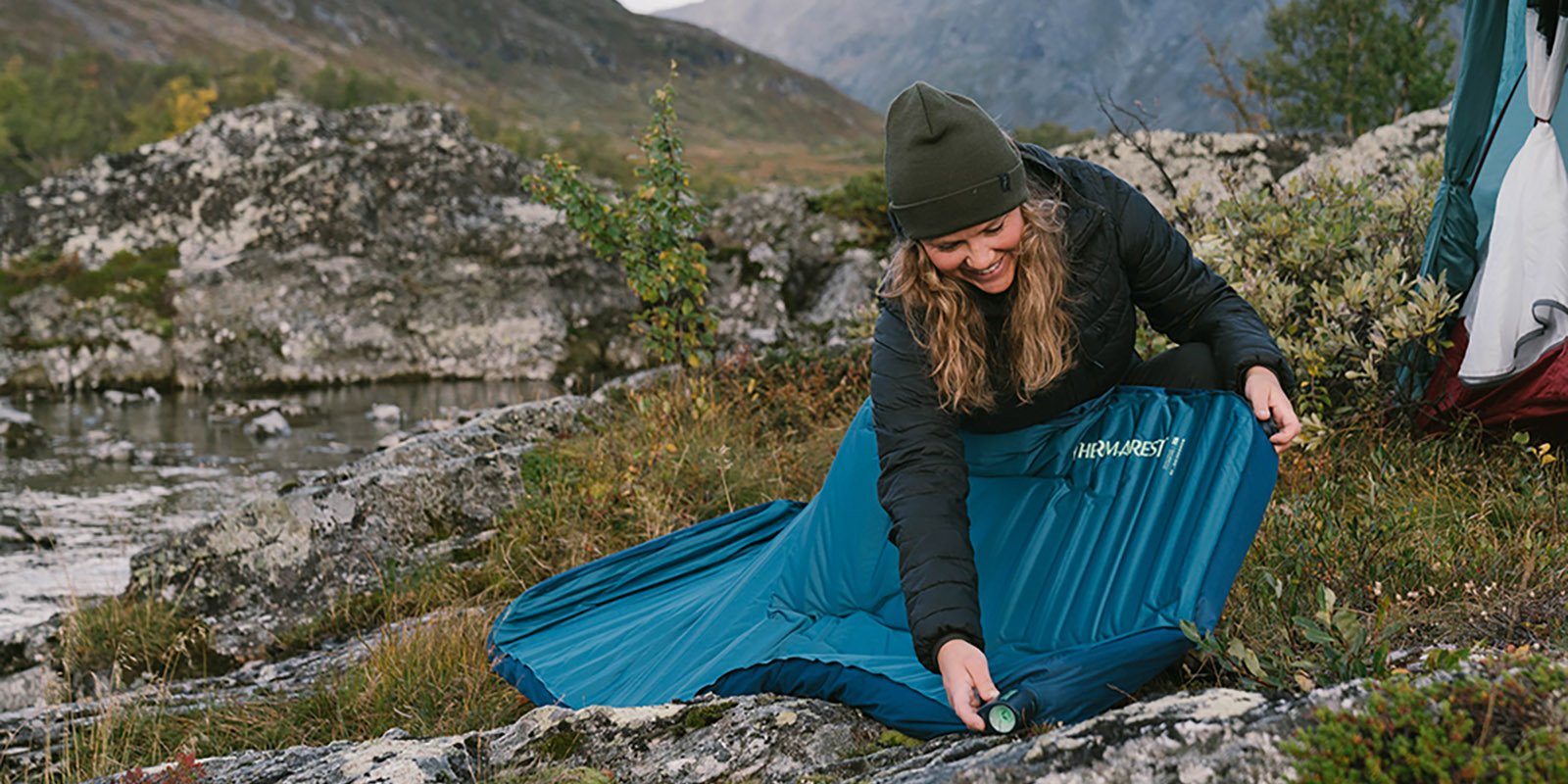Here at Therm-a-Rest we are stoked for you to experience the new WingLock™ and TwinLock™ valves. So, we sat down with two Therm-a-Rest design engineers to get a behind the scenes technical perspective on the new valves and how they came to be. If you want to find information about the valves that you won’t find anywhere else, this is the place.
Who are you and what do you do for Therm-a-Rest?
Mikk: I’m Mikk Kaschko. I am a design engineer, which means designing mostly plastic parts for Therm-a-Rest, or designing with our fabrics and foams and integrating all those into the design process.
Mack: I’m Mack Hauff, I’m the product development manager and a part-time design engineer. So, part of the time I do the same thing as Mikk, the rest of the time I do too much to list. [Laughs]
So far at Therm-a-Rest, what has been your favorite project to work on?
Mack: It’s too hard to decide so I’ll pick two. One of them is definitely the new valves. I think it’s a super cool project to work on because there’s only so many hard goods that go on a sleeping pad, especially something as iconic as the Therm-a-Rest sleeping pad. Also, I started off as a manufacturing engineer here and I was part of the team that kicked off the shaped NeoAir® project, which is really cool as well.
Mikk: I’d say the valve project. It has been my biggest single design project at this company. It’s fun working on a project that has high volumes like this, because you get a little bit more creative freedom. We can afford to pursue really interesting mechanical processes and integrate them into the design because we’re not only making 2000 units a year, we’re making 400,000.
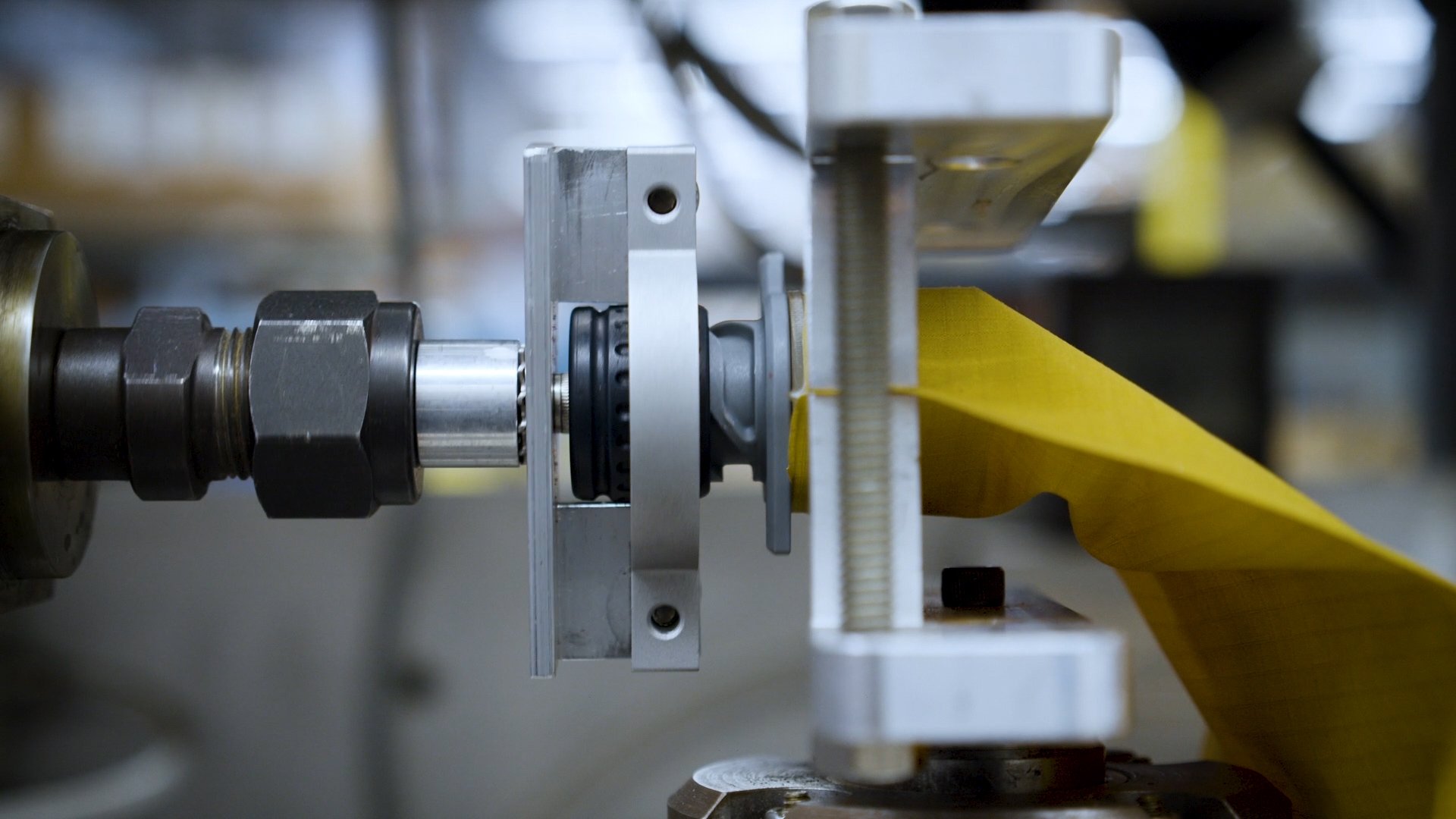 Alright, let’s talk about those WingLock™ and TwinLock™ valves. I figured we would start at the very beginning, why did Therm-a-Rest decide to retire the classic valve and develop a new one? Was there anything wrong with the classic valve?
Alright, let’s talk about those WingLock™ and TwinLock™ valves. I figured we would start at the very beginning, why did Therm-a-Rest decide to retire the classic valve and develop a new one? Was there anything wrong with the classic valve?
Mikk: No. I mean it’s a, it’s a bomber design and we are still using it on all of our small volume products, like pillows and seats because they don’t require moving a lot of air in and out. It has plenty flow rate to do that. The main couple of reasons behind the project was increasing the flow rate, and improving the interaction between the users and the pad.
What do you mean when you say “interaction?”
Mikk: I’m talking about check valves or other things to help get that air into the mattress and keep it there without them having to do anything separate. With the classic valve, you can put your tongue on the valve and prevent most of the air from escaping…. but then you’re like, taking a breath with your tongue on the valve and it’s this multi-step process… and then your buddy talks to and you’re like, “what?” [mock sounds of air escaping a pad] [Laughs]
Mack: I agree with Mikk, but I’ll add that the thing that was wrong with the classic valve was that it was created at a time when every pad was an inch thick with a foam core. A pad inflated itself, and there wasn’t as much volume to deflate. But pads got thicker and thicker and now we’re at four-inch air pads. The amount of volume in a pad has changed so drastically since the original valve was created that it wasn’t meeting the consumer needs. Also, the check valve now, is almost required. Without it, if you take your mouth off for a second you lose air. You couldn’t use a pump sack nearly as effectively if you don’t have that check valve. The classic valve didn’t have high enough flow rates and some of the extra features that people expect you had to have.
Just for layman’s clarity, a check valve is a one-way valve.
Mack: Yeah.
You probably touched down on it, but maybe you can synthesize it, what were the core objectives of the new valve project?
Mikk: We wanted to keep the intuitive mechanisms of the old valves–twist open, twist close–and keep that as one step as you can. Just open and close; trying to remove any other steps. Like some of the flat valves you see out there you have to pop one part out, pop another part in and then pop a part back on to deflate the pad. And then you have to reverse that whole process to close it again. Ours is simple. Open, blow to inflate, close. Then twist and open to deflate. Secondly, it had to meet Therm-a-Rest standards. It had to stand up to our classic valve’s history of reliability, and it had to be user and factory serviceable. The WingLock™ is user replaceable, you just order a new valve and pop it in. If your dog chews on it for instance, which seems like one of the highest rates at which people destroy their valves, it doesn’t ruin the whole pad. [Laughs]
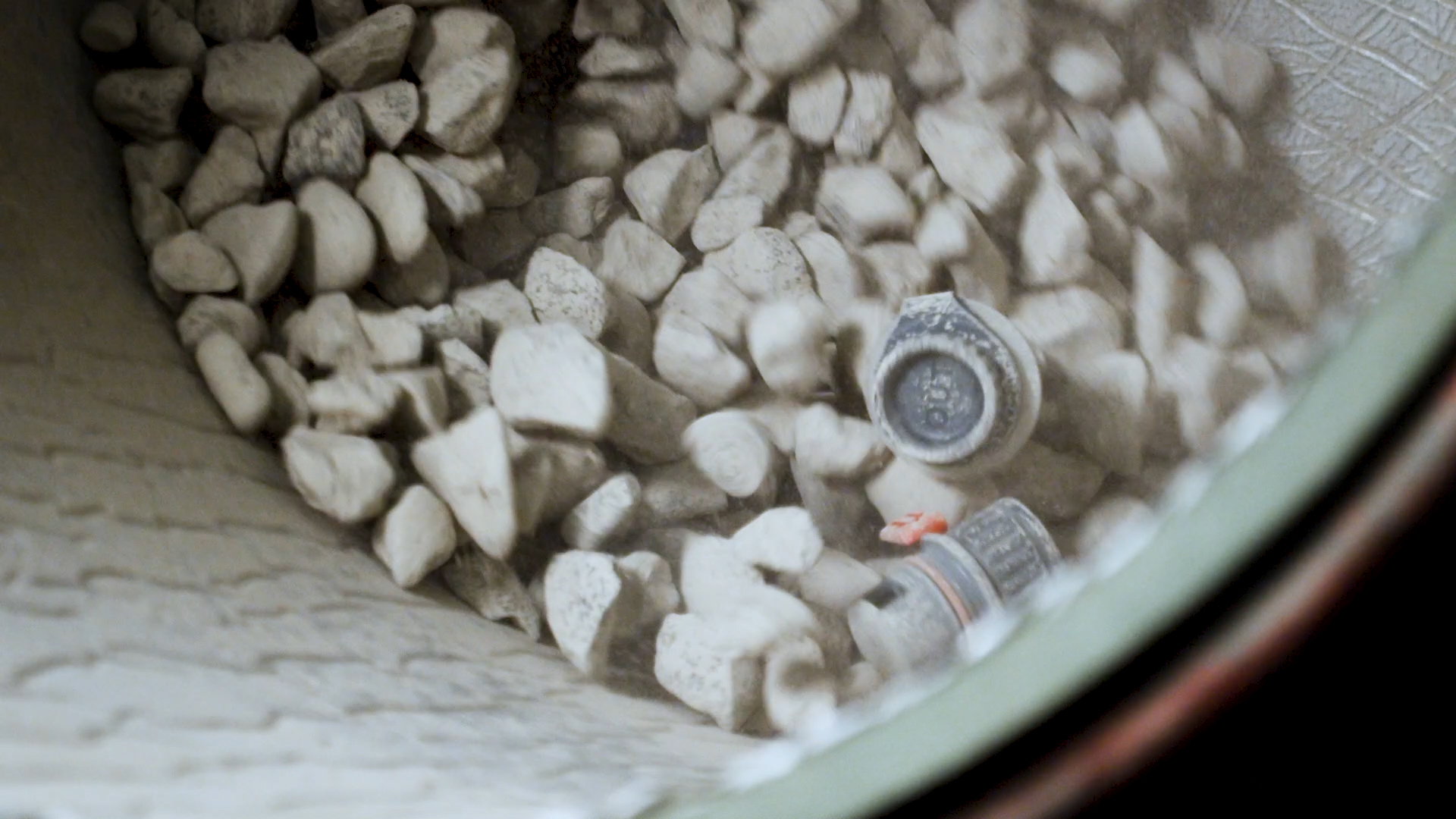 Oh yeah, I used to work in Repairs, so I’ve seen some dog aftermath.
Oh yeah, I used to work in Repairs, so I’ve seen some dog aftermath.
Mikk: We also wanted a good interface for mouth inflation because so many customers fill their pads this way. We have mattresses that are 30, 40 years old that come into repairs and are irreparable for whatever reason. We have cut them open and you can see that there’s no degradation in the foam because of mouth inflation, so we needed a mouth interface ready for hundreds of uses. Some of the flat valves are kind of awkward because you can’t hold them up to your face while you inflate the mattress very easily.
Mack: It’s the macro versus micro movements. Twisting it’s a natural, micro movement that you can do pretty easily with your gloves on in cold conditions. Some competitors’ valves you have to grab onto something and rip it. It’s not a natural movement as opposed to just twisting things. So, that was one of the main objectives, to keep it something that you can do eyes closed or in a dark tent—that didn’t require a lot of effort or thought put into it.
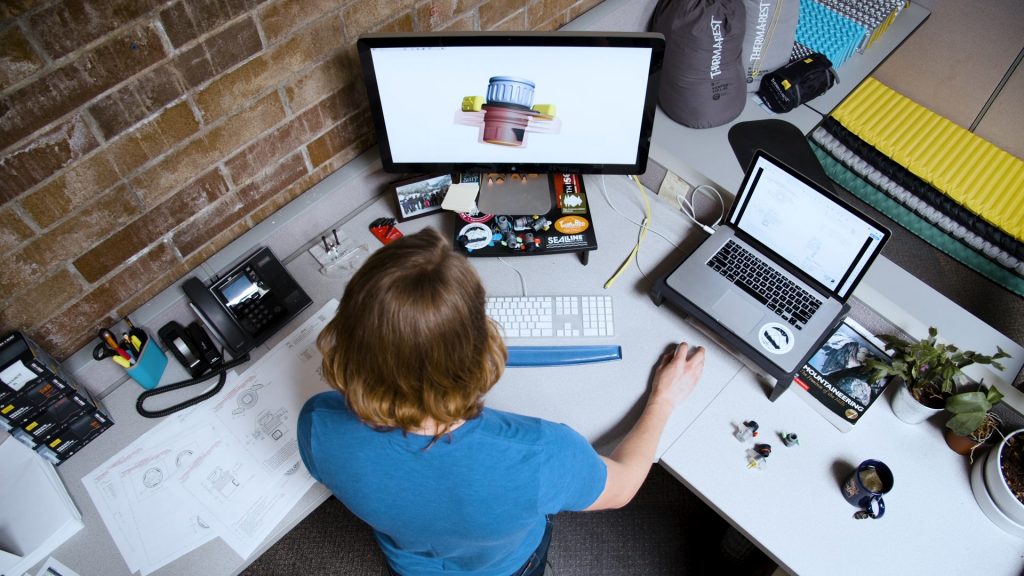 From those core objectives, how did we decide to design two valves, the WingLock™ and also the TwinLock™? Was that the initial plan or was there a split?
From those core objectives, how did we decide to design two valves, the WingLock™ and also the TwinLock™? Was that the initial plan or was there a split?
Mack: There was a split at some point, not the initial plan to do that. We understood that this was going on every pad, and it worked well for, you know, all the air pads that are three inches and under. But the same year that we are launching this, we are also launching four-inch air pads. We realized that we were making things faster but it still wasn’t fast enough for our higher volume pads. We needed a faster way to dump the air out, especially for the higher volume pads. So halfway through we knew we needed to come up with a specific valve for the extra big pads, and that became the TwinLock™.
When did this project kick off? How long has it been?
Mikk: Like mid 2017 I think, right?
Mack: Yes, and no. A while before that people were starting to tell us that we were too slow and someone on the team just plain said, “we need to make a better valve.” This is probably going to sound bad, but we floated the idea of just putting a band-aid on it where we just made the classic valve 30% bigger, so it would’ve looked identical but larger. Ultimately, we were like, “that’s not us, we can’t just do that. It’s not enough and not the way that we do things.” We decided to do it right, and that meant coming up with something brand new.
Can you walk us through a day in the life of a Therm-a-Rest design engineer working on the valve project? In the thick of the project, what was your work like?
Mack: [Laughs] I would say it was extremely challenging. To create a valve that was super simple, super intuitive, robust, and cost effective was really challenging. I ended up doing a lot of prototyping and then what seemed like a never-ending cycle of bubble testing, heat testing, cycle testing, cold testing, putting dirt on there…. You learn as much as you can during all that, go back to your CAD, figuring out how to fix the problems that arose and repeat that over and over and over again. Creating airtight things is truly difficult. It adds a whole other level of complexity. It’s just a ton of design time, 3D print time, we made three separate injection mold tools to test this out and then just constant routine bench-top tests.
Mikk: To add to that, it’s a lot of communication with suppliers trying to figure out where can we push the limits. Say we wanted to get a faster flow rate out of our prototypes, that might cause a challenge for our tooling manufacturer. Mack and I have a relative knowledge of injection tooling, but working with them to find out where can we push it, and where should we not push it, is tons of communication back and forth.
[Mack nods fervently]
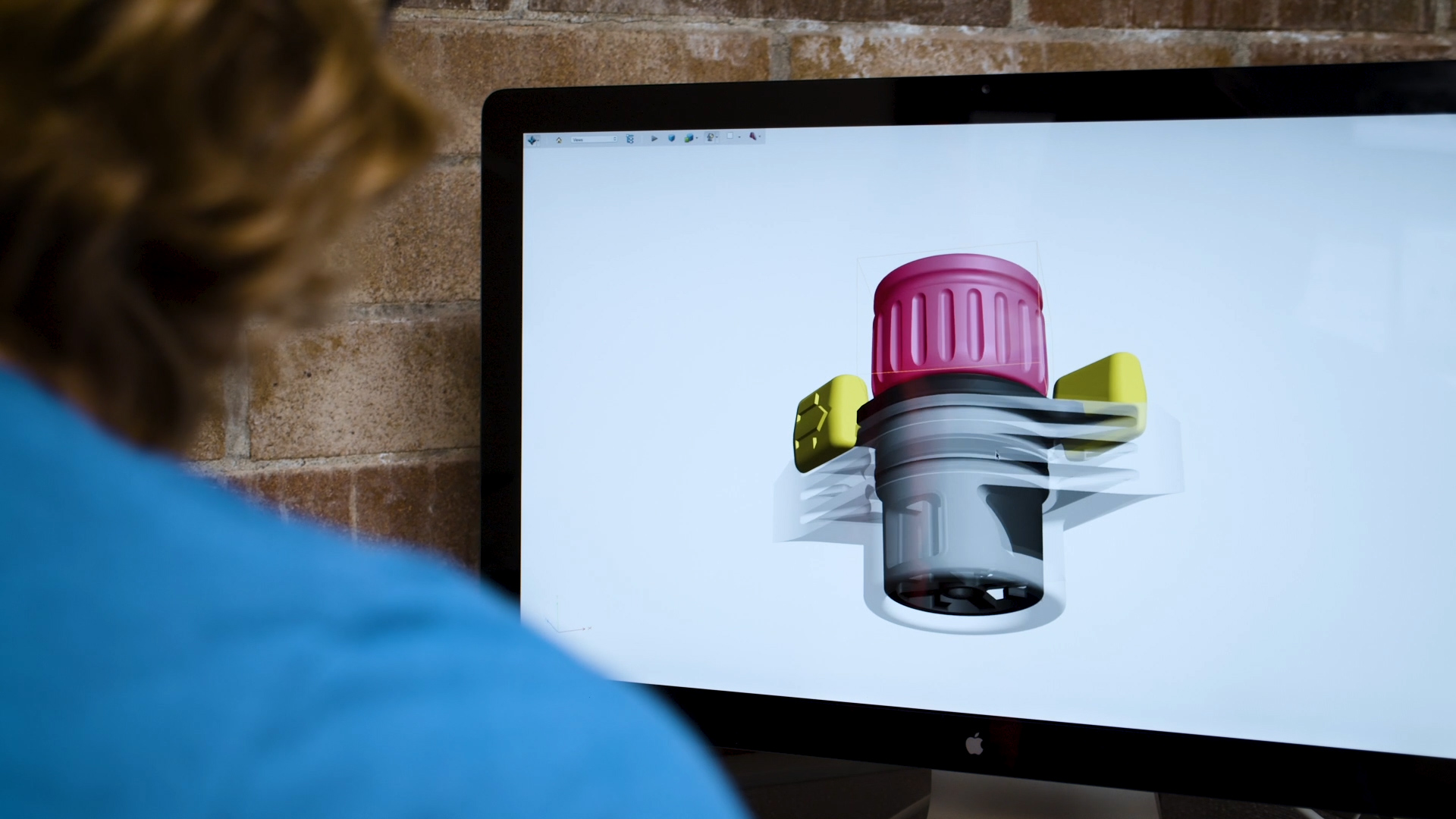 Was there one challenge in particular that that stuck out to you during the project?
Was there one challenge in particular that that stuck out to you during the project?
Mikk: One of the more memorable challenges was the instructions.
Mack: Oh yeah! Yeah, yeah.
Mikk: When we started with the WingLock™, it looked drastically different than it does now. It was much slimmer, but it wasn’t visually notifying our users how to work it. You would twist the wings still, but they were just these little triangles on top, they blended in so nicely.
Mack: It was so sleek and sexy. [Laughs]
Mikk: It was so sleek that people couldn’t tell. I mean they’d open the cap and they’d be like, “Okay, great. Why hasn’t the air come out?” Because they couldn’t figure out the additional step of you having to twist the wing-lock. We did multiple rounds where we went to Ascent Outdoors in Ballard (Ballard is a neighborhood of Seattle) and we spent the entire day recording and interviewing people. Getting them to sign a nondisclosure agreement and then observing them using the valve. We had different instructions on each of these different iterations trying to find out what they do. Do they read the instructions? Do they just tear them off? Or like most people, are they like, “I’ll read the instructions later if I need to for some reason, but like I’m just gonna try and use it.” The first time we did it, I think it was like 20 or 30 percent could not figure out how to get the air out of their pad.
Mack: One the last ones we did before we finally set the instruction decal directly on the valve was where we had instructions snap on so you couldn’t blow into it without ripping them off. And the people would read it: twist wings to deflate. Okay. [mocks inflating pad] “How do I do deflate this pad?” [Laughs] We were at a loss on how to instruct people how to use it.
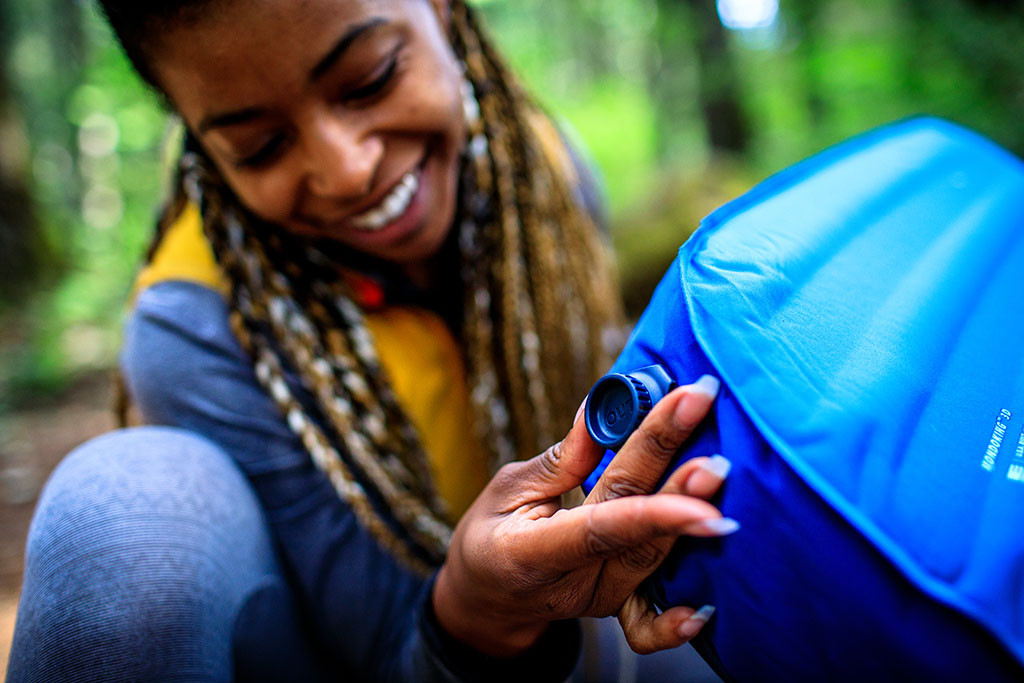 After all that, when did you know you’re going to have a great product for the market?
After all that, when did you know you’re going to have a great product for the market?
Mikk: The first time that I knew the TwinLock™ was going to be awesome was when I had a MondoKing™ 3D that I made with these 3D printed valves that I glued in so they didn’t leak. I took it to a week-long family visit in Detroit, Michigan and slept on it for eight nights in a row and I was deflating it every morning to make room in the house. Just how fast it was to deflate the pad with the new valve and how easy it was to inflate it with the pump sack I had with me… It felt so far beyond the 2019 MondoKing™. I was recommending all my friends to wait until next season to buy a pad, it’s just that good.
You’re not supposed to do that.
[Laughs]
Mack: For me it was earlier. I was doing the initial design work of the WingLock™ and we narrowed it down to about 10 real unique designs. I wasn’t really happy with any of them. And then it hit me. I had the idea for the double twist and I was like… [a light bulb appears over Mack’s head] This one is very simple, there’s not a lot that can go wrong with it. Not just from like a design standpoint, but from a user standpoint as well. I knew immediately that this was the right path to go down. I prototyped it up and gave it to people around the office, but they were used to the classic valve and a little bit hesitant. They would say things like, “Oh, it’s bigger,” and, “What’s wrong with the old one?” But as soon as they actually took it out into the field, they didn’t want to use the classic valve anymore. When people started trying to get rid of their old valve and get pads with the new valve I knew we had a winner. It’s that much better that they would be willing to give up their trusted old stuff and buy something new.
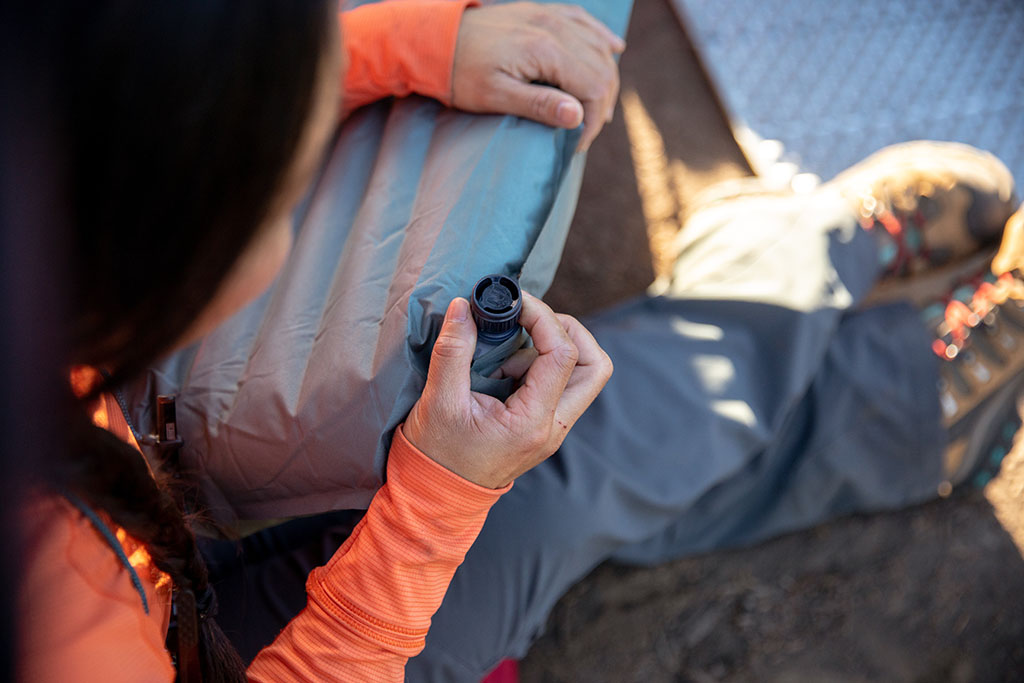 There are a lot of sleeping pads on the market and some worthy competition; a lot of great designs out there. From a design engineering perspective how do the WingLock™ and the TwinLock™ valves stand out in comparison to the competition?
There are a lot of sleeping pads on the market and some worthy competition; a lot of great designs out there. From a design engineering perspective how do the WingLock™ and the TwinLock™ valves stand out in comparison to the competition?
Mack: I think ours are the most reliable. The WingLock uses two compressed O-rings and the O-rings are protected. Valves with exposed sealing surfaces aren’t as protected. You get dirt on the pad, and when you close the valve the dirt is going to get in there and interact with the sealing surfaces, causing potential leaks. We believe in compressed O-rings. We like the fact that they are shielded from the outside environment. Again, we rely on simple twisting actions whereas other valves you have to pinch and pull up, or put your finger into the bleed. It’s just not as easy, especially in the cold weather with gloves on, or in a crowded tent. I think ours are more intuitive, simpler, easier to use.
So, if you’re in a three-person tent, stuck in the middle, you can still reach over and let little air out if you happen to over-inflate…
Mack: Yeah, exactly. You don’t have to roll off or elbow your neighbor. When you’re “backcountry tired” you need things to be simple otherwise you’re not going to do them. You’ll be like, “fine, I’m just gonna try to sleep.” Then you just sleep restlessly for the rest of the night, and your body isn’t properly rested for the next day. That’s a poor user experience.
Mikk: To add, in choosing our O-rings we went through three different materials to find one that maintained its same performance at -40F and 140F. It barely changes the feel of how the valve works at extreme cold temperatures or hot temperatures. That’s a big one for me at least. Being replaceable/repairable is another big one. Most, if not all, of our major competitors can’t repair a valve if something fails. And, we talked about this earlier, but mouth inflation is easier with a valve off the surface of the pad. Trying to hold a flat valve against your mouth can be really awkward, especially once the mattress starts to get full. When it’s not full you can kind of grab it and manhandle it and get a good purchase. Once it gets full, there’s nothing to grab onto anymore.
We were trying initially to design the fastest inflate and the fastest deflate, that was obviously an early goal. At a certain point in our testing we found that this one competitor had this really big hole in their mattress when you open their valve, and it took one less second to deflate their pad versus one of our pads with the TwinLock™. The design compromise to get to that was immense. Would it be worth it? We decided no, because you can get 95% of the way there with a much more robust design that meets some important core objectives like repair-ability and ease of use, etc.
Mack: To drill down just a little bit further on the replaceability, if the valve delaminates you throw the whole pad away, with ours you could save yourself $200 by buying a $10 replacement part, which is pretty rad.
Mikk: And it’s also not going into the landfill! I would say that’s pretty important, especially to a lot of our customers.
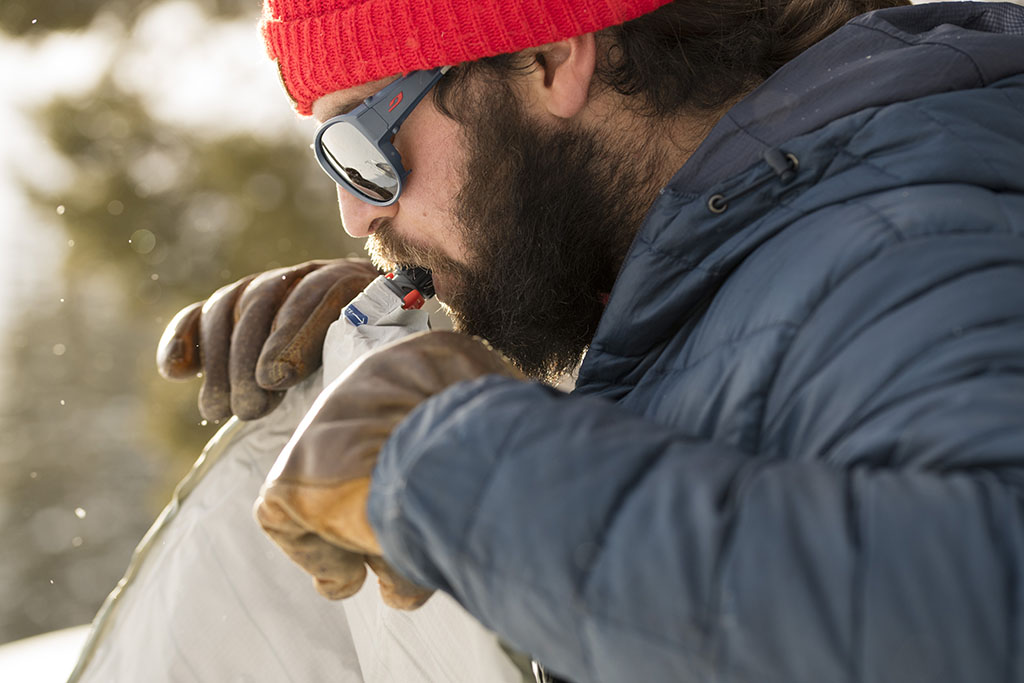 We’ve been talking about faster flow rates. One of the more remarkable claims Therm-a-Rest has made about the WingLock™ is that they inflate your pad 3x faster than the classic valves. Some early reviews came in that contradicted this claim. Yet, hearing you guys talk of the rigorous testing and development it seems a little crazy that we would just say that if we were untrue. Can you provide some perspective on the matter?
We’ve been talking about faster flow rates. One of the more remarkable claims Therm-a-Rest has made about the WingLock™ is that they inflate your pad 3x faster than the classic valves. Some early reviews came in that contradicted this claim. Yet, hearing you guys talk of the rigorous testing and development it seems a little crazy that we would just say that if we were untrue. Can you provide some perspective on the matter?
Mikk: We certainly tested it, and I think there’s a little bit of miscommunication going on. I checked our website, and right now it says, “3x faster flow rate.” The flow rate through the valve is 3x faster at an average person’s breath. Typically, when somebody is inflating a pad they have a certain amount of pressure and flow rate that they can generate with their lungs.
Do you know what that pressure is?
Mikk: It’s about 5 inches of water. Which is about 0.2 pounds per square inch (PSI). This will give them a momentary flow rate of 6.5 standard cubic feet per minute (SCFM) through the WingLock™ valve. Through the classic valve, they would only achieve 2.2 SCFM. 2.2 to 6.5 is 295% change, or a 3x faster flow rate.
Mack: But the volume that you need to blow in is still the same. It’s just easier. Perhaps that would have been a better way to say it, “3x easier,” because 3x faster flow rate kind of translates into 3x less effort. You’re expending less energy from your lungs, but it’s still the same amount of volume that needs to go into the pad.
Mikk: What units do you measure easier in though? We’re engineers, we like mathematically measurable things. [Laughs] We can see how simply saying, “3x faster” is misleading or ambiguous, but saying things isn’t our department.
I suppose that’s mine.
[More laughs]
Mikk: Maybe we need to reiterate that it’s, “3x faster flow rate.” It’s not necessarily three times faster, despite the factors like the larger valve-opening and the check valve.
Mack: You still have to take time to inhale between breaths.
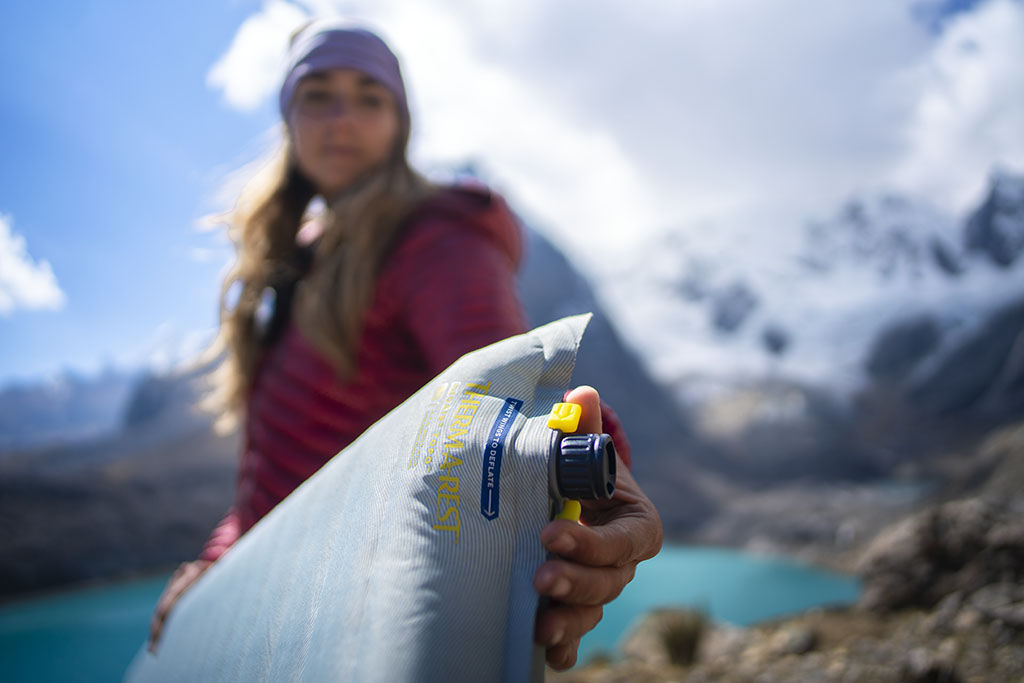 Thanks for clearing that up. To round that out, if you were out in the field with the new valves, how would you achieve the fastest inflation? What would you do or use?
Thanks for clearing that up. To round that out, if you were out in the field with the new valves, how would you achieve the fastest inflation? What would you do or use?
Mack: I would personally use the BlockerLite™ Pump Sack. I tried it yesterday with the regular size NeoAir® XLite™, and with a little bit of practice you can fill up your pad and in under a minute with about seven bags of air. That’ll change with size of the pad, like if you have a Topo™ Luxe it will be more. But for a regular size, seven bags of air and under a minute is pretty awesome. Also the NeoAir® Micro Pump is super cool because it can deflate your pad as well. Put that in there. [Laughs] It’ll take a bit longer than a pump sack to inflate, but you can just walk away and come back in minutes and your pad will be all nice and topped off for you, which is rad.
Mikk: My favorite is definitely the BlockerLite™ Pump Sack, specifically because it is a dry sack, so you get that dual purpose. It’s 20L so you can put your critical items that need to stay dry in there and then use that to inflate your pad once your tent is pitched. The combination of the pump sack and a valve with the check valve is amazing. Much better ergonomics than the classic valve where you would lose air in between fills. It takes so little effort. You don’t get lightheaded. It’s fast. I love it.
You’ve been working on this project for a few years now, what’s it like to see it come to life? To complete it, have it hit the market and then see the valves out in the wild?
Mikk: It’s pretty surreal. It’s awesome and it’s terrifying because, you know, that’s on me right there. If they have failure in the field that’s on me. All the testing that we do is to try and mitigate that. But every once in a while, a dog or something happens, and even if it’s not our fault I still feel that pain for them because I lived this valve for two, three years.
Mack: I’d say the same thing, it’s surreal. It’s not very often you work on something this big in terms of sheer quantity for us. Usually a project results in us manufacturing 2,000 to 5,000 of something, but for this one we’re making that much in a month. So, it’s really crazy. To pick up on what Mikk said there’s a strange balance. We invested so much time and effort and it’s a great product that we have been hyper focused on and excited about. But it’s also one of those products where if it fails, people are pissed, and if it doesn’t fail, people probably don’t care that much about their valve.
Mikk: [Laughs] It’s not the flashiest new product like a pad would be.
Mack: It’s kind of just funny in that sense, but it’s cool to have your name associated with something that goes on every Therm-a-Rest pad. It’s not that often that you have that kind of impact on the outdoor industry as a whole. It’s a big responsibility.
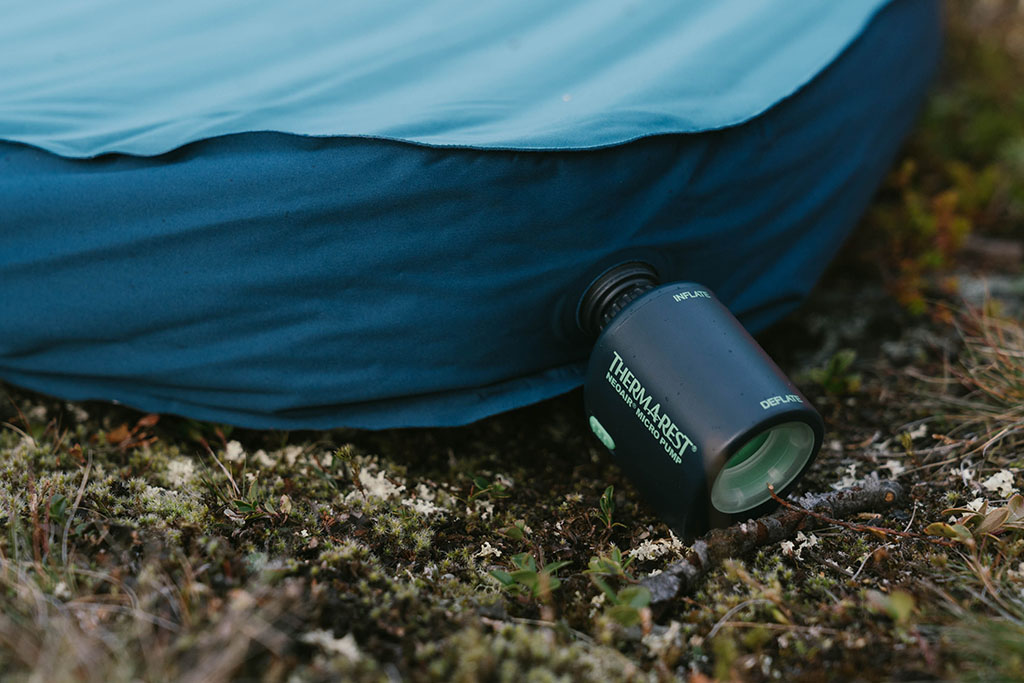 Any final thoughts for our readers? Like maybe read the instructions?
Any final thoughts for our readers? Like maybe read the instructions?
[Laughs]
Mikk: We have a repair shop. They’re very nice and do an amazing job.
Mack: Check out the deflate feature on the NeoAir® Micro Pump. It’s awesome.
